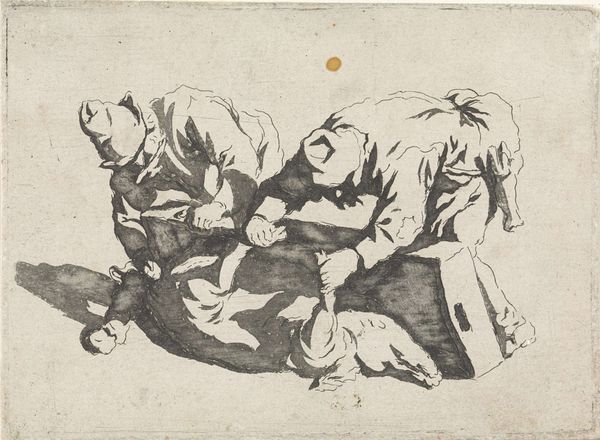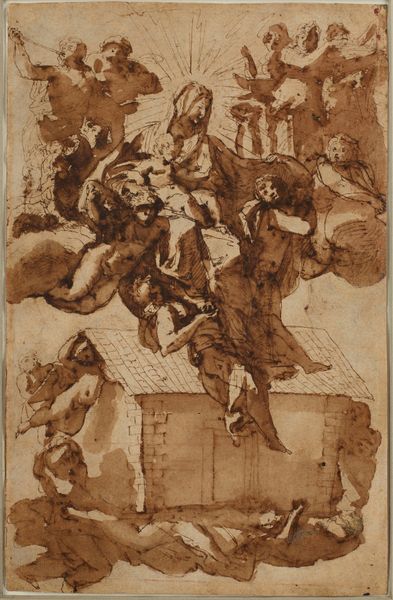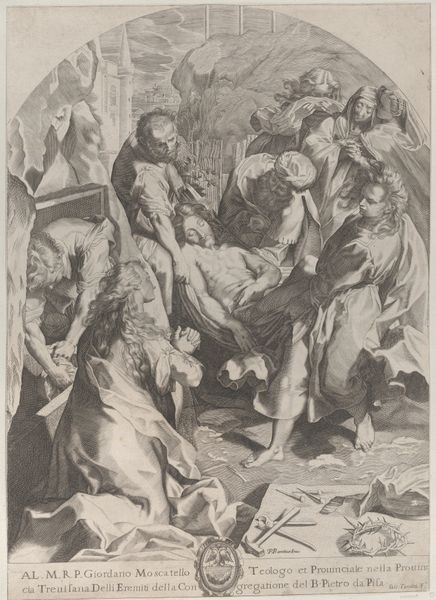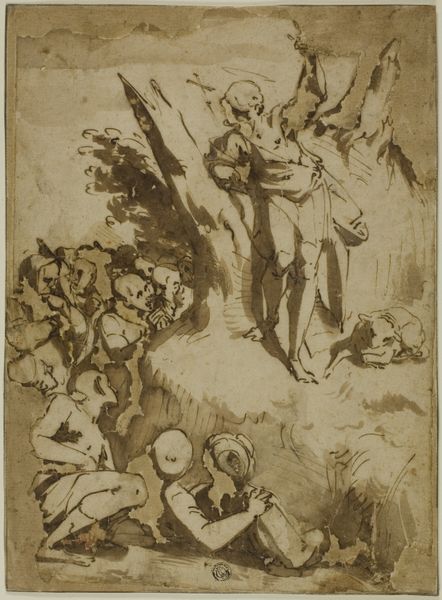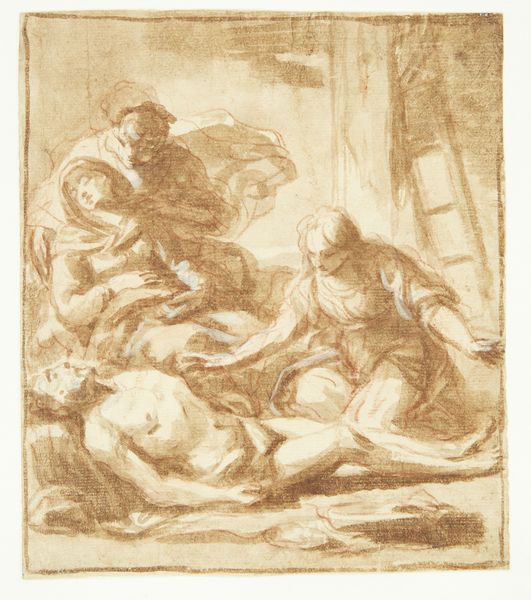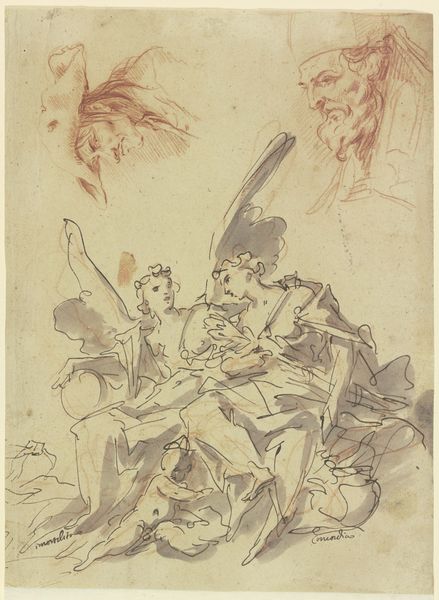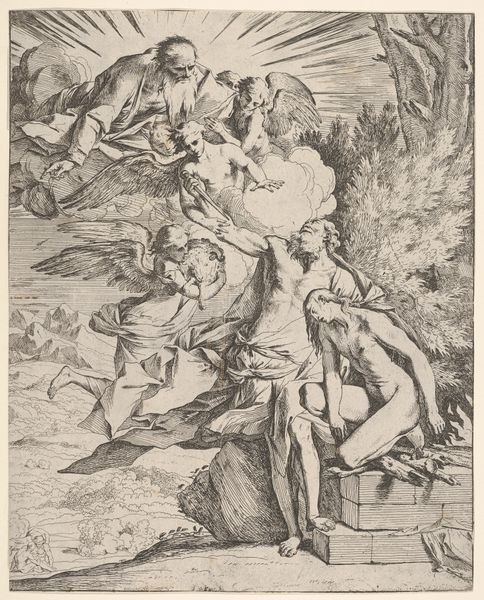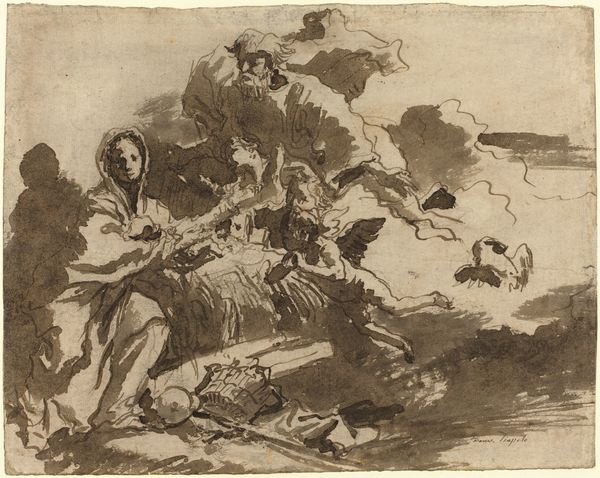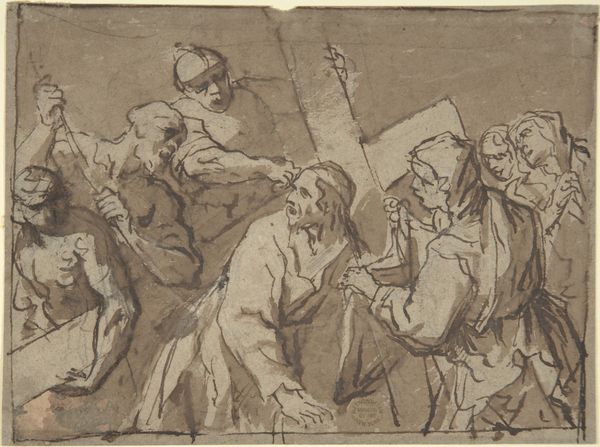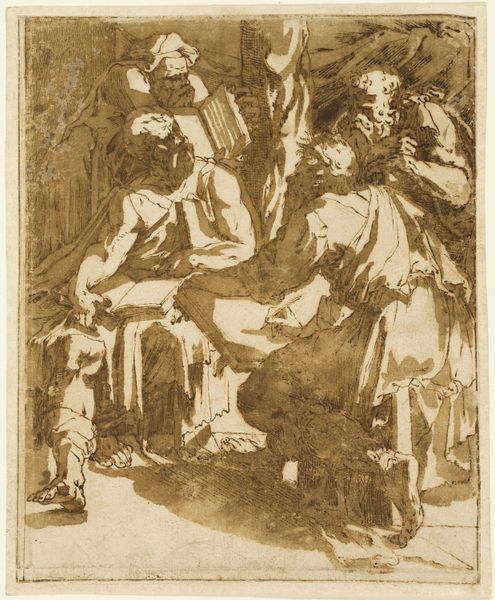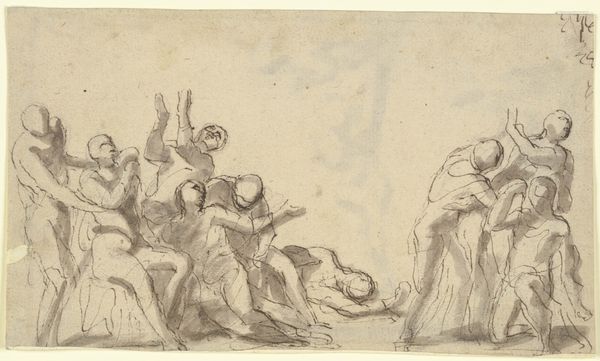
drawing
#
drawing
#
baroque
#
figuration
Dimensions: overall: 43.9 x 34.3 cm (17 5/16 x 13 1/2 in.)
Copyright: National Gallery of Art: CC0 1.0
Editor: So, this is "Two Monks with a Prostrate Man," a drawing from around 1725 by Giovanni Battista Tiepolo. I’m struck by how dynamic it is, even though it’s just brown ink on paper. What compositional elements stand out to you? Curator: Indeed, the dynamism arises from a mastery of Baroque principles. Note how Tiepolo orchestrates depth and volume. The interplay of light and shadow, rendered through nuanced washes, establishes a dramatic hierarchy. See how the assertive diagonal thrust, beginning with the monk pointing skyward and concluding at the prostrate man's feet, effectively guides the eye and reinforces the narrative tension. Editor: The use of line is so interesting, how loose and free it feels in some areas but then really precise in others, like around the faces. Curator: Precisely! That oscillation between defined contour and suggestion produces an almost theatrical animation. It minimizes static representation, prioritizing a feeling of spontaneous, energetic creation. Furthermore, the economical use of line prevents any suffocating sense of detail. The white of the paper functions as negative space and an active pictorial element in its own right. Observe how these expanses subtly contribute to the visual balance. Editor: It’s almost like the drawing itself is performing the drama. Thanks, that makes me appreciate how the materiality adds so much! Curator: Yes, a work like this exemplifies how close visual analysis allows one to "read" beyond representation to grasp the underlying formal logic of an artwork. A useful lens for appreciating art history and understanding our reactions to it.
Comments
No comments
Be the first to comment and join the conversation on the ultimate creative platform.
